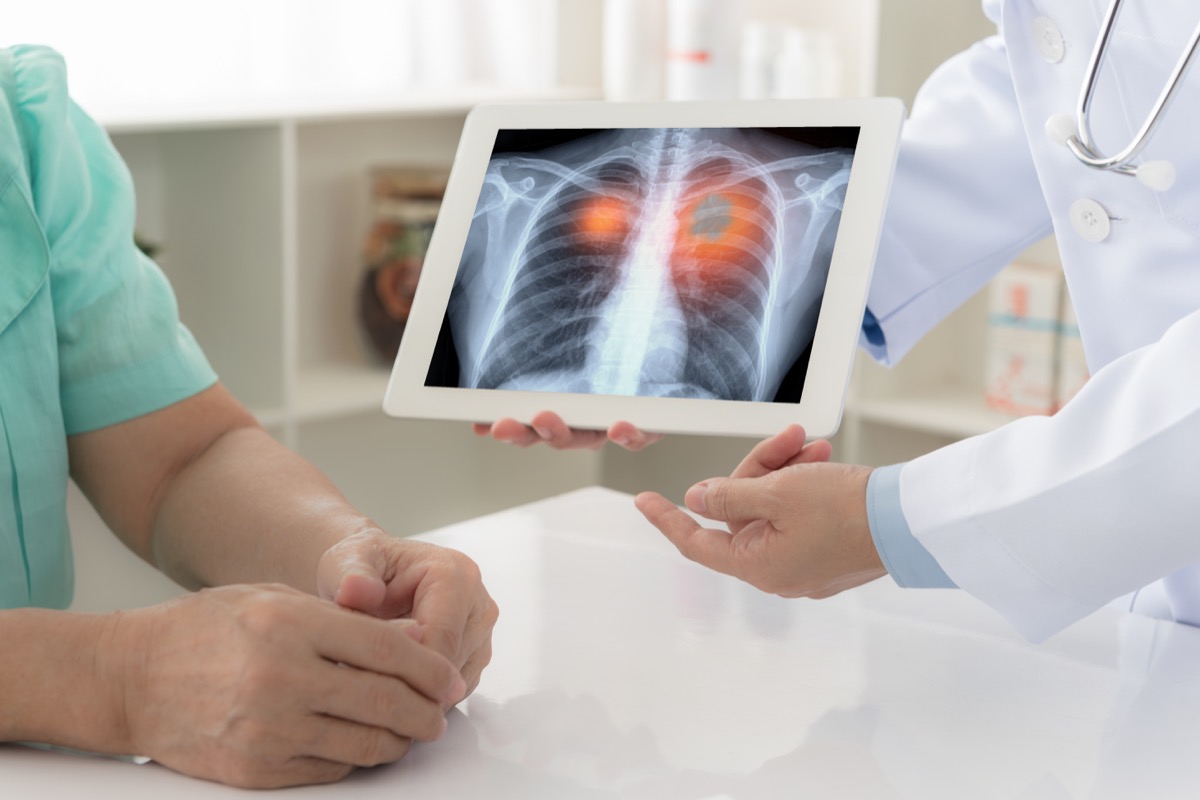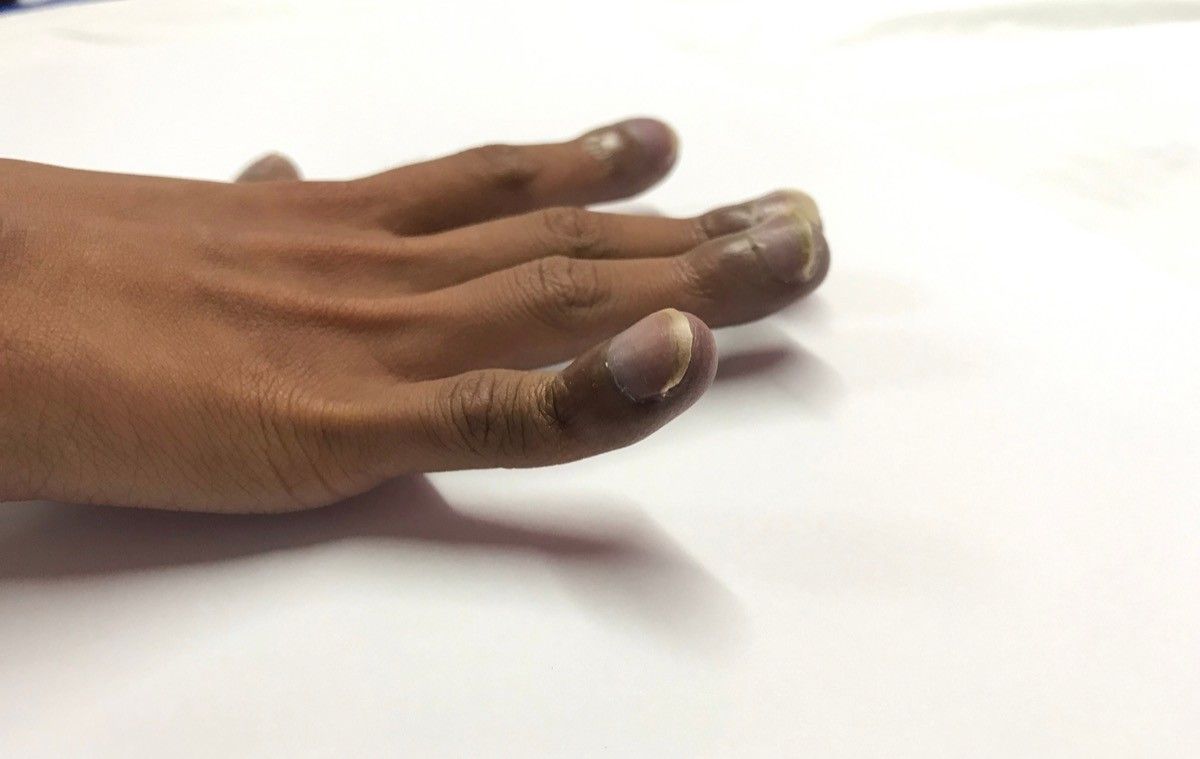THIS SURPRISING SYMPTOM COULD SIGNAL A SERIOUS PROBLEM WITH YOUR LUNGS.
Lauren Gray
July 25, 2021

Amid the pandemic, millions of Americans have seen firsthand the devastating effects of serious lung conditions. And while the CDC says that the COVID crisis alone has caused over 2.3 million hospitalizations in the U.S. to date, an additional 37 million Americans live with a chronic lung condition, according to the American Lung Association.
However, experts say that some of the worst lung conditions, including lung cancer, can be notoriously difficult to diagnose during the stages at which they're still curable. One study published in the journal Primary Health Care Research and Development found that due to complex presentations, up to 20 percent of lung cancer cases are initially overlooked, even after X-rays. That said, those same researchers suggested that "greater vigilance for patients presenting with atypical symptoms" would aid in prompt diagnosis.
One symptom in particular, which presents in the fingers or toes, can clue you into a serious lung condition. Read on to find out what to look for, and to learn more about the underlying cause.
RELATED: If You Feel This at Night, You Need to Get Your Liver Checked, Doctors Say.
Digital clubbing can indicate a serious lung condition.

While many lung conditions are often difficult to diagnose and may go untreated for prolonged periods of time, there's one sign that should tip you off to a serious problem: clubbing of the fingers or toes. According to the Mayo Clinic, this is known as digital clubbing, and it's common among patients with lung cancer and pulmonary fibrosis, a chronic lung condition in which the tissue surrounding the lungs becomes scarred. It can also indicate lung abscesses, cystic fibrosis, chronic obstructive pulmonary disease (COPD), or a chronic lung infection.
While medical professionals are still working to understand the underlying causes of digital clubbing, they do know that it occurs when the body struggles to get enough oxygen into the bloodstream. As a result, fluid concentrates within the extremities, creating a swelling or rounding effect.
RELATED: If Your Breath Smells Like This, Get Your Liver Checked, Experts Say.
Here's what to look out for.

According to Pulmonary Fibrosis News, digital clubbing "typically occurs in stages, with the fingernails lifting from the nail bed first." From there, the fingertips become bulbous and begin bulging. A report from Mount Sinai's health library says that the nail beds may also soften, and the nails "may seem to 'float' instead of being firmly attached." They often "form a sharper angle with the cuticle," and they may also curve sharply downward in a convex fashion.
While other symptoms of lung conditions may develop slowly over time, digital clubbing tends to develop over a matter of just weeks.
For more health news delivered straight to your inbox, sign up for our daily newsletter.
Digital clubbing can also indicate a range of other conditions.

While lung cancer is the most common cause of digital clubbing, and 65 percent of people with pulmonary fibrosis also present with this symptom, there are cases in which the clubbing is the result of another underlying condition. Most often, these are conditions related to the heart, including congenital heart defects, and infections in the lining of the heart chambers or valves, among others.
Mount Sinai points out that in other, rarer cases, digital clubbing may suggest any of the following conditions: celiac disease, liver disease, dysentery, Graves' disease, a thyroid disorder, or one of several types of cancer.
Here's what to do if you're experiencing digital clubbing.

Most of the illnesses that cause digital clubbing are serious and require immediate medical care, so you should contact your doctor immediately if you notice this symptom. While there is no treatment for digital clubbing specifically, it may go away as you treat the underlying cause.
Treatment may include a combination of chemotherapy, surgery, and radiation to treat cancer, a combination of medication and therapies to treat various other lung conditions, or a combination of surgery and medication to treat various heart conditions, depending on the condition causing the clubbing.